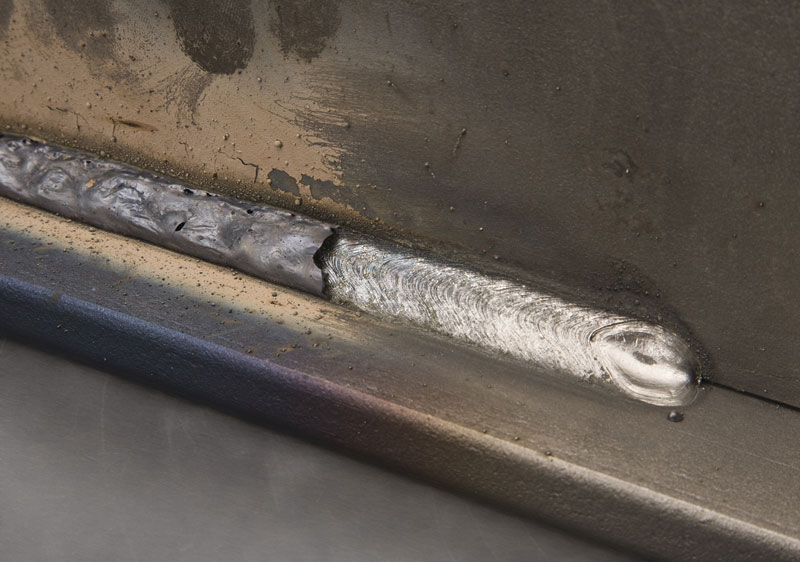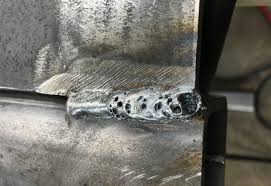Unwinding the Enigma of Porosity in Welding: Tips for Lessening Defects and Optimizing Quality
In the complex world of welding, porosity stays a relentless obstacle that can dramatically impact the top quality and integrity of bonded joints. Recognizing the factors that add to porosity formation is critical in the pursuit of perfect welds. By untangling the secret of porosity and implementing reliable techniques for issue minimization, welders can boost the requirements of their job to attain superior high quality outcomes. As we explore the depths of porosity in welding, revealing the tricks to its avoidance and control will be vital for specialists looking for to understand the art of premium weldments.
Understanding Porosity in Welding
Porosity in welding, a common concern come across by welders, refers to the presence of gas pockets or gaps in the bonded product, which can compromise the honesty and top quality of the weld. These gas pockets are usually caught during the welding process as a result of numerous aspects such as incorrect protecting gas, polluted base materials, or incorrect welding parameters. The formation of porosity can damage the weld, making it at risk to splitting and rust, ultimately leading to architectural failings.
By identifying the importance of preserving correct gas protecting, making sure the cleanliness of base materials, and enhancing welding setups, welders can considerably minimize the chance of porosity formation. In general, a thorough understanding of porosity in welding is essential for welders to create top notch and durable welds.

Usual Reasons For Porosity
When inspecting welding procedures for potential top quality issues, comprehending the usual reasons of porosity is important for preserving weld honesty and avoiding architectural failings. Porosity, identified by the visibility of cavities or spaces in the weld metal, can substantially compromise the mechanical residential or commercial properties of a bonded joint. One common cause of porosity is inappropriate protecting gas insurance coverage. Poor securing gas flow prices or inappropriate gas mixtures can bring about atmospheric contamination, causing porosity development.
In addition, welding at improper specifications, such as exceedingly high traveling rates or currents, can generate excessive disturbance in the weld pool, capturing gases and creating porosity. By attending to these common causes via proper gas securing, material prep work, and adherence to optimal welding criteria, welders can lessen porosity and enhance the high quality of their welds.
Strategies for Porosity Prevention
Carrying out effective preventative steps is crucial in decreasing the incident of porosity in welding procedures. One technique for porosity avoidance is guaranteeing appropriate cleaning of the base metal before welding. Contaminants such as oil, grease, rust, and paint can lead to porosity, so thorough cleaning utilizing ideal solvents or Related Site mechanical methods i was reading this is essential.

An additional key precautionary measure is the choice of the appropriate welding consumables. Using premium filler products and securing gases that appropriate for the base metal and welding process can substantially decrease the danger of porosity. In addition, maintaining correct welding criteria, such as voltage, current, travel rate, and gas circulation rate, is vital for porosity avoidance. Differing the recommended setups can lead to inappropriate gas coverage and inadequate blend, causing porosity.
In addition, employing proper welding techniques, such as maintaining a consistent travel speed, electrode angle, and arc length, can help avoid porosity (What is Porosity). Sufficient training of welders to ensure they follow best techniques and top quality control treatments is likewise important in reducing porosity defects in welding

Best Practices for Quality Welds
Making sure adherence to market requirements and appropriate weld joint prep work are basic facets of attaining consistently high-quality welds. Along with these foundational steps, there are several best practices that welders can implement to further enhance the quality of their welds. One key technique is keeping correct sanitation in the welding location. Pollutants such as oil, grease, rust, and paint can adversely affect the top quality of the weld, bring about issues. Extensively cleaning up the workpiece and surrounding area prior to welding can assist alleviate these problems.
Another finest method is to very carefully pick the suitable welding specifications for the details materials being joined. This consists of establishing the correct voltage, current, travel rate, and protecting gas flow price. Correct parameter choice makes sure optimum weld infiltration, fusion, and overall high quality. In addition, making use of top quality welding consumables, such as electrodes and filler metals, can substantially influence the last weld top quality. Purchasing costs consumables can cause more powerful, extra durable welds with less defects. By following these best practices, welders can consistently produce top quality welds that meet industry standards and surpass client expectations.
Importance of Porosity Control
Porosity control plays a critical function in ensuring the honesty and quality of welding joints. Porosity, characterized by the existence of tooth cavities or voids within the weld steel, can dramatically jeopardize the mechanical residential properties and structural integrity of the weld. Too much porosity deteriorates the weld, making it much more at risk to splitting, corrosion, and total failing under operational lots.
Efficient porosity control is essential for preserving the desired mechanical residential properties, such as strength, ductility, and durability, of the welded joint. What is Porosity. By lessening porosity, welders can boost the general top quality and reliability of the weld, making sure that it meets the performance needs of the intended application
Moreover, porosity control is important for achieving the wanted visual look of the weld. Too much porosity not just compromises the my response weld but additionally diminishes its visual charm, which can be essential in markets where aesthetic appeals are necessary. Proper porosity control methods, such as making use of the correct shielding gas, managing the welding criteria, and making certain proper tidiness of the base materials, are necessary for producing high-grade welds with very little issues.

Verdict
In verdict, porosity in welding is a common defect that can compromise the top quality of the weld. It is necessary to regulate porosity in welding to ensure the integrity and stamina of the last item.